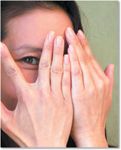Article
New dry eye treatments give opportunity to grow business
Take advantage of specialists in the practice and be well versed in treatment regimens.

With the advent of new dry eye treatments, ophthalmologists are positioned to help these patients, who were as frustrated as their doctors in their desire to find long-lasting relief.
These innovations offer what James Rienzo calls a "paradigm shift" in treatment, and they present doctors with a new opportunity to grow their businesses.
In fact, he noted, about 4.3 million Americans suffer with chronic dry eye-more than the 3 million with glaucoma or 3 million cataract surgeries performed each year.
However, less than one-third of dry eye patients consult an ophthalmologist, he continued.
"There is a lot of opportunity out there to get these patients in and treat them," Rienzo said.
Making this market more palatable, he notes, is the fact that 70% of healthcare decisions are made by women, who also make up the largest segment of the population with dry eye. If they are satisfied, they are also the segment most likely to make referrals.
"Now there is an opportunity to embrace these patients and treat them and their disease," Rienzo said. "We have new treatment options out there, and the goal is to increase patient satisfaction, to keep that referral source coming into the practice, and elevate yourself in the community."
Hold seminars The key to capturing this largely untapped potential revenue is marketing. Rienzo referred to two cases in which ophthalmologists were able to grow their businesses with a very profitable return on investment.
In the first instance, a large, multiple-location practice in the Midwest decided to develop a dry eye treatment program. They trained staff members about dry eye syndrome and made sure they were able to answer frequently asked questions patients would have.
They mailed out 3,900 post cards, inviting potential patients to come to a 6 p.m. reception and presentation about dry eye. The postcards listed the symptoms and invited recipients to bring a friend.
Realizing they might not be able to handle the calls, the practice hired a call center, which charged 95 cents per phone call. The practice also placed newspaper ads 3 weeks before the seminars, and gave local media outlets a press packet about dry eye syndrome.
Rienzo said the practice spent $6,000 for advertising, the call center, and the mailings.
It worked.
Of the 3,900 post cards, the call center received 220 reservations, and more than 200 people came to one of four seminars. Of those who attended, 179 made appointments, earning the practice about $16,000 in exam revenue. Another 22 cataract surgeries arose from this promotion, and the practice successfully raised its profile within the community with a 5-to-1 return on investment.
"They were thrilled," Rienzo said. "They were treating a disease that was big and they were increasing patient satisfaction, but this was really also a marketing plan to re-brand them in the community and drive other patient types into the practice."
Invest in advertising In his second example, Rienzo described a large East Coast practice that sought to increase patient volume and promote their specialists.
The practice mailed 18,500 letters over a 3-week period, trained its staff on ways to answer frequently asked questions, and ran half-page ads once a week for 8 weeks in the Saturday health section of a 600,000-circulation newspaper.
Newsletter
Don’t miss out—get Ophthalmology Times updates on the latest clinical advancements and expert interviews, straight to your inbox.




